The Majestic White Rhino: A Comprehensive Guide
The white rhino is a symbol of African wilderness. Despite its name, the animal is not actually white; the name originates from the Afrikaans word wit, meaning white, or from wijd, meaning wide, referring to its broad, square lip. This magnificent herbivore faces ongoing threats, making understanding its biology, behavior, and conservation status critical. This guide covers all aspects of the white rhino, from its evolutionary history to its current challenges and how to encounter one responsibly.
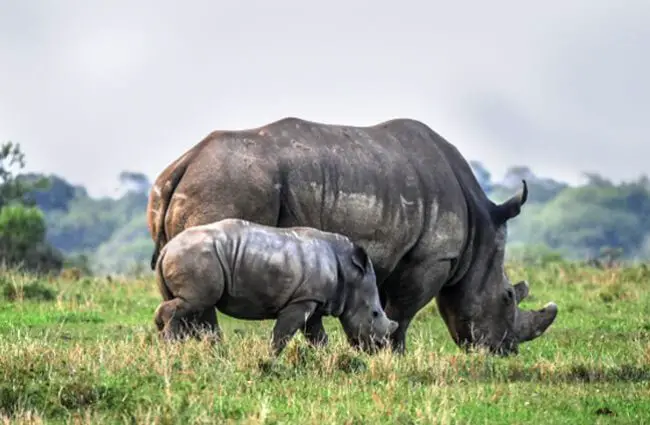
Understanding White Rhino Biology and Physical Characteristics
Physical Attributes
White rhinos are among the largest land mammals on Earth. Males typically weigh between 2,300 and 2,500 kilograms (5,070–5,510 pounds), while females weigh between 1,700 and 2,000 kilograms (3,750–4,410 pounds). They stand between 1.7 and 1.85 meters (5.6–6.1 feet) tall at the shoulder. Their most distinguishing feature is their massive size and prominent lip, adapted for efficiently grazing on grasses. They possess relatively poor eyesight, relying more on their acute sense of smell and hearing.
Subspecies and Distribution
There are two subspecies of white rhino: the Southern White Rhino (Ceratotherium simum simum) and the Northern White Rhino (Ceratotherium simum cottoni). The Southern White Rhino, while still vulnerable, has a larger population and is found in South Africa, Namibia, Botswana, Zimbabwe, and Eswatini. Tragically, the Northern White Rhino is functionally extinct in the wild, with only two females remaining, both under continuous guard. Assisted reproduction efforts are ongoing in an attempt to save the subspecies.
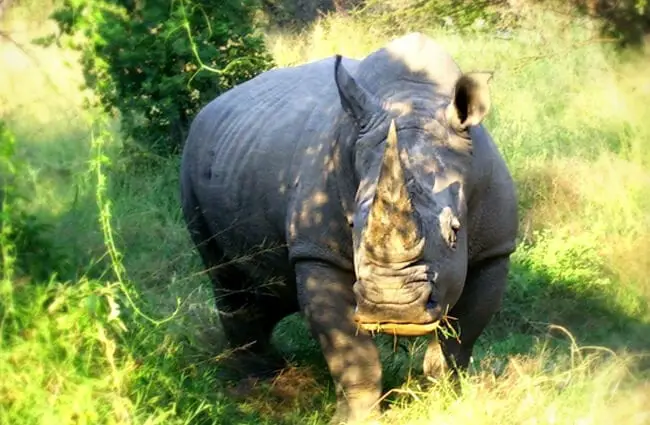
Habitat and Diet
Preferred Habitat
White rhinos thrive in grasslands and savanna woodlands. They require access to water sources and areas with abundant grasses for grazing. They create well‑worn paths, often leading to waterholes and feeding grounds, which benefit other species as well. They also enjoy wallowing in mud, which helps regulate body temperature and protects against insects.
Dietary Habits
As grazers, white rhinos primarily feed on grasses. Their broad, square lip is perfectly adapted for cropping grass close to the ground. They consume large quantities of vegetation daily, up to 50 kilograms (110 pounds). They are selective feeders, preferring younger, more nutritious grasses. They also ingest soil occasionally, believed to provide essential minerals.
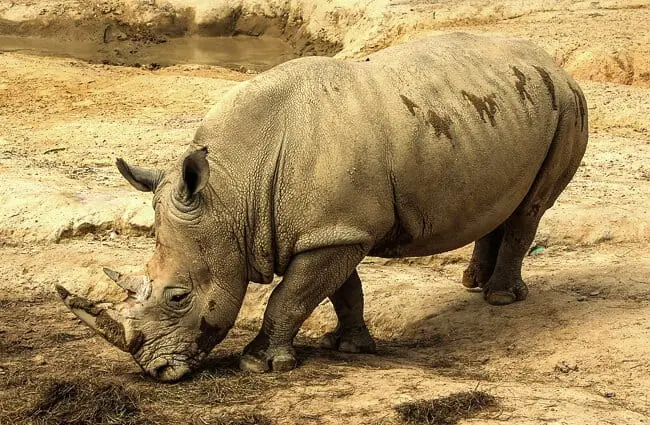
Behavior and Social Structure
Social Dynamics
White rhinos are generally solitary animals, although they can be found in small groups known as crashes. These crashes typically consist of a mother and her calf or a few adult females. Males are more solitary and seek out females only for mating. Dominance is established through displays of size and aggression, with males sometimes engaging in fights using their horns.
Communication
White rhinos communicate through scent marking using dung heaps and urine, vocalizations, and body language. They have specialized scent glands on their feet and leave scent markings on vegetation. They also use a range of vocalizations, including snorts, growls, and bellows, to communicate with each other. Posturing, such as head lowering and horn displays, is used to establish dominance or signal aggression.
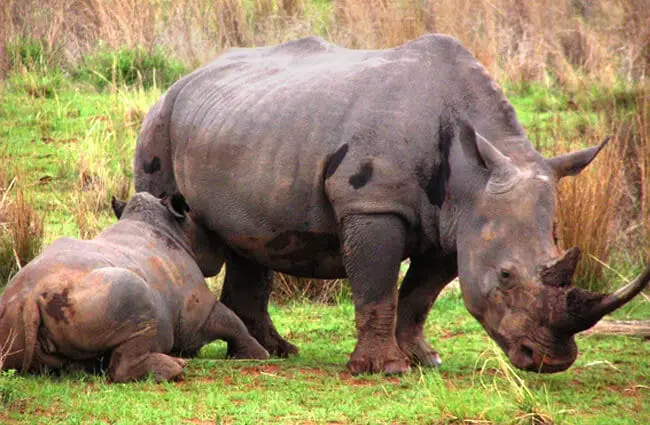
Reproduction and Life Cycle
Mating and Gestation
White rhinos have a relatively slow reproductive rate. Females reach sexual maturity around 5 to 7 years of age. They are polyestrous, meaning they can enter estrous cycles multiple times throughout the year. Mating can occur throughout the year, but is most common during the rainy season. Gestation lasts approximately 16 to 18 months, after which a single calf is born. Calves weigh around 40 to 60 kilograms (88 to 132 pounds) at birth.
Calf Development
Calves are dependent on their mothers for up to two years. They nurse for about 16 months and continue to rely on their mothers for protection and guidance. Calves gradually begin to graze on vegetation at around six months of age. They learn important survival skills from their mothers, such as identifying food sources and avoiding predators. Females typically give birth to a calf every two to three years.
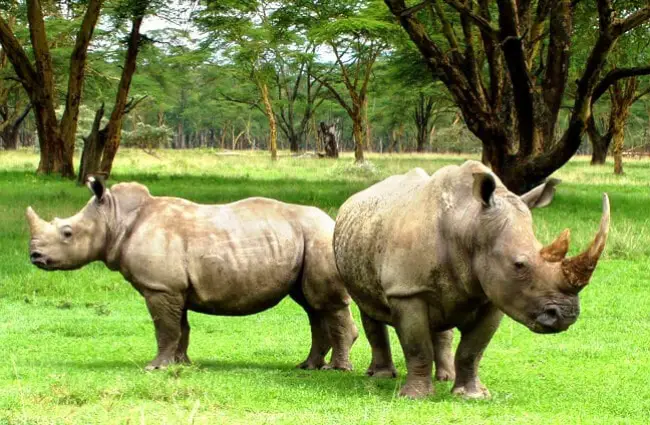
Ecological Role and Interactions
Contribution to Ecosystem
As large herbivores, white rhinos play a critical role in shaping grassland ecosystems. Their grazing helps maintain the health and diversity of grasslands, preventing the encroachment of trees and shrubs. They also create habitats for other animals by trampling vegetation and creating pathways. Their dung provides nutrients for plants and supports a variety of insects and other invertebrates.
Interactions with Other Animals
White rhinos often interact with other animals in their environment. They are known to tolerate oxpeckers, birds that feed on ticks and other parasites on their skin. They may also compete with other herbivores, such as zebras and wildebeest, for access to grazing resources. Lions and hyenas may occasionally prey on young or sick white rhinos, but they are generally wary of healthy adults.

White Rhinos and Humans
Historical and Cultural Significance
White rhinos have a long history of interactions with humans. They have been depicted in rock art and other forms of cultural expression for centuries. In some cultures, their horns were traditionally used for medicinal purposes or as symbols of power and status. However, these practices have contributed to the decline of rhino populations.
Conservation Status and Threats
White rhinos are classified as Vulnerable by the International Union for Conservation of Nature (IUCN). The primary threat to their survival is poaching, driven by the demand for their horns in some Asian markets. Habitat loss and fragmentation also pose significant challenges. Conservation efforts include anti‑poaching patrols, habitat restoration, and translocation programs.
Encountering White Rhinos in the Wild & Safety
If you are fortunate enough to encounter a white rhino in the wild, it is crucial to maintain a safe distance. Never approach them, and avoid making sudden movements or loud noises. If a rhino appears agitated or approaches you, slowly back away and seek shelter behind a sturdy object, such as a tree or vehicle. Always follow the guidance of experienced guides or park rangers.
Caring for White Rhinos in Captivity
Zookeepers caring for white rhinos must provide spacious enclosures that mimic their natural habitat, with plenty of grazing areas, mud wallows, and shade. A balanced diet consisting of grasses, hay, and supplemental feed is essential. Regular veterinary care, including vaccinations and parasite control, is crucial. Enrichment activities, such as puzzle feeders and novel objects, help stimulate their mental and physical well being. Avoiding direct eye contact and loud noises when interacting with these animals is essential for maintaining a safe and respectful environment.
Conclusion
The white rhino is a truly magnificent animal, a symbol of African wilderness and a vital component of grassland ecosystems. Understanding its biology, behavior, and conservation status is crucial for ensuring its survival. By supporting conservation efforts and promoting responsible tourism, we can help protect these gentle giants for generations to come.

![Red Angus Closeup of a beautiful Red Angus cowPhoto by: U.S. Department of Agriculture [pubic domain]https://creativecommons.org/licenses/by/2.0/](https://animals.net/wp-content/uploads/2020/03/Red-Angus-4-238x178.jpg)




![Red Angus Closeup of a beautiful Red Angus cowPhoto by: U.S. Department of Agriculture [pubic domain]https://creativecommons.org/licenses/by/2.0/](https://animals.net/wp-content/uploads/2020/03/Red-Angus-4-100x75.jpg)

